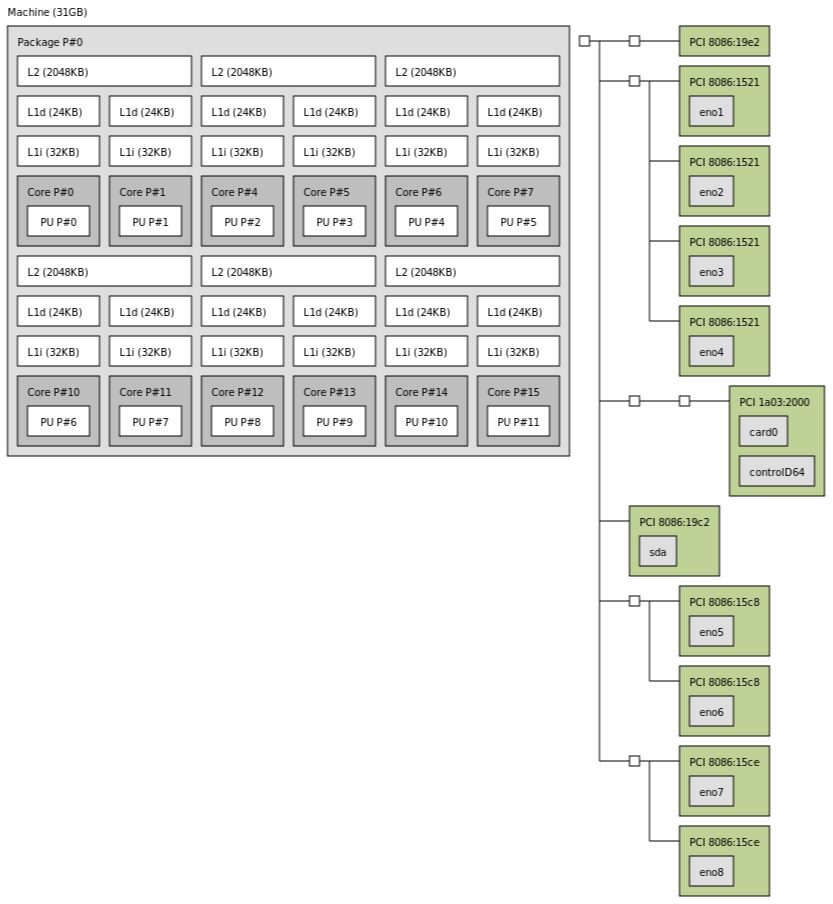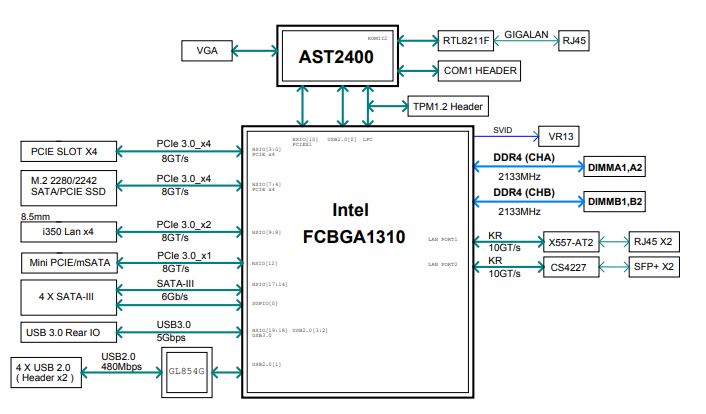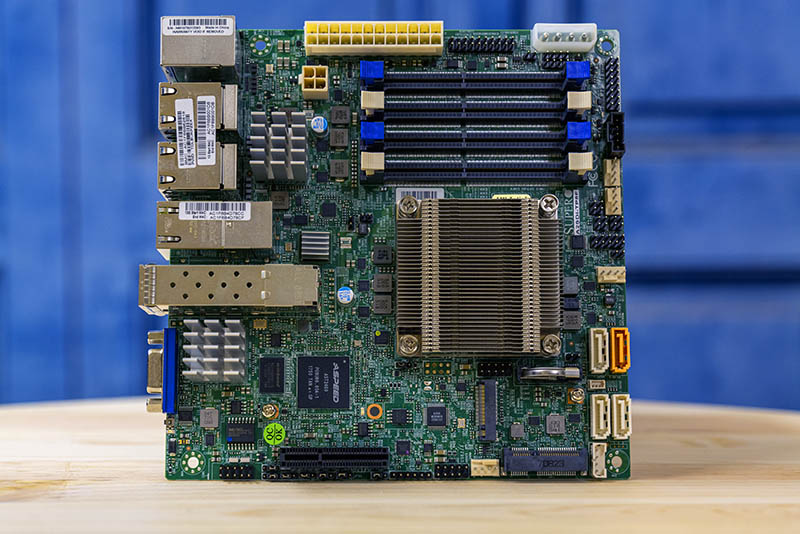Supermicro A2SDi-TP8F Block Diagram and Topology
Since this is single SoC system, the topology is very straightforward. Here is what the system topology looks like:

As you can see, since this is an Atom C3000 CPU, there is no large shared L3 cache which is done to save on die area. All peripherals are attached directly to the Atom C3858 SoC.
There is a single NUMA domain. Instead, we wanted to focus on the block diagram:

This block diagram is very important. If you purchase lower-end SKUs such as the Atom C3558(R) or C3338, those CPUs do not have the full set of 20 high-speed I/O lanes. We commonly see shared lanes in those designs. Here, the A2SDi-TP8F is able to utilize all of the I/O functionality that is present on the motherboard without making trade-offs. You can see an updated list of C3000 chips and their high-speed I/O lanes in our Intel Atom C3000 Line Quietly Refreshed piece.
Final Words
Depending on the reseller and availability, we normally see these motherboards have a street price of $770-840 in single-unit quantities. The Intel Atom C3858 sold by Intel to Supermicro makes up over 40%-45% of that cost. Onboard we have high-end features such as quad 10GbE. Adding a new dual-port 10GbE SFP+ and dual-port 10Gbase-T adapter to a system can easily cost over $400. While the starting price is higher for a motherboard, it is also very reasonable when you consider the components involved and their alternatives.
The underlying theme of the A2SDi-TP8F is that it is a great platform if you need the features it offers. If you need a bare minimum dual-core CPU and 1GbE networking only, there are other models out there that have a better feature set. For those who are building edge networking appliances, uCPE, and other applications, the mix of ports on this platform is excellent, as are the small features such as the storage configuration and the ability to power drives via the motherboard hard drive power connector.

There are some tradeoffs with the platform. Most notably, is the four SODIMM configuration. If you look at the motherboard, it is immediately apparent why this had to be done as the platform is packed with features. Still, it is something to keep in mind with a 64GB upper memory limit.
In our testing, the A2SDi-TP8F performed very well. The design utilizing flexible high-speed I/O lanes to provide great connectivity is appreciated as it simplifies building a system with the platform. Overall, this was a great platform.




Remainds me combination of words “Cripple fight” :-)
Kind a old tech, already 3yo.
Introduction August 15, 2017 (announced)
August 15, 2017 (launched)
We need Refresh for Atoms! Intel!
Sorry for bad attitude and comments lately. Reason, can’t find worth replacement for my current board x9srl with IvyBridge on board. Looks like i stuck with it for another year..till ddr5
$788.00
Patrick, would you consider loading this thing up with one of the more common router/firewll distros and benchmarking it as a network security appliance?
@emerth and @Patrick
Preferably a pfSense and TNSR comparison.
@emerth, @newyork10023, @Patrick
I’d like to also see what full power draw looks like with the 2x 10G-baseT and the 2x SFP+ populated with SFP+ 10G-baseT modules (a possible scenario). I’m guessing heat will be too much a problem with two SFP+ 10GbT modules, but it would be interesting to see if the board could power them.
Does it work with a fanless industrial case? What are the options to run this fanless?
Do you have the thermals of just the board running?
Your former article on supermicro C2750-based motherboard lead me to buy it for my home activity: horse power (not so much to be honest), space for quite a bit of ram (enough for managing a couple of VMs), plenty network interfaces, an almost fully licensed BMC (you just need a license to upgrade BIOS via BMC, which is something I can live without – and besides you cannot even buy it anymore) and an absolutely low power footprint.
This one seems to be the natural evolution.
Will evaluate for a centralized device to be used as both network device (WAF or IPS come to mind) and low-load server.
Thank you
quick question. since this only has a single pcie x4 expansion slot, and 4 sata ports, what’s the best option to add a bunch of sata drives? Is there a pcie x4 sas expansion card that can be adapted to support 24+ sata drives? can’t find any pcie x4 sata expansion cards that support more than 8 drives. asking for a friend ;)